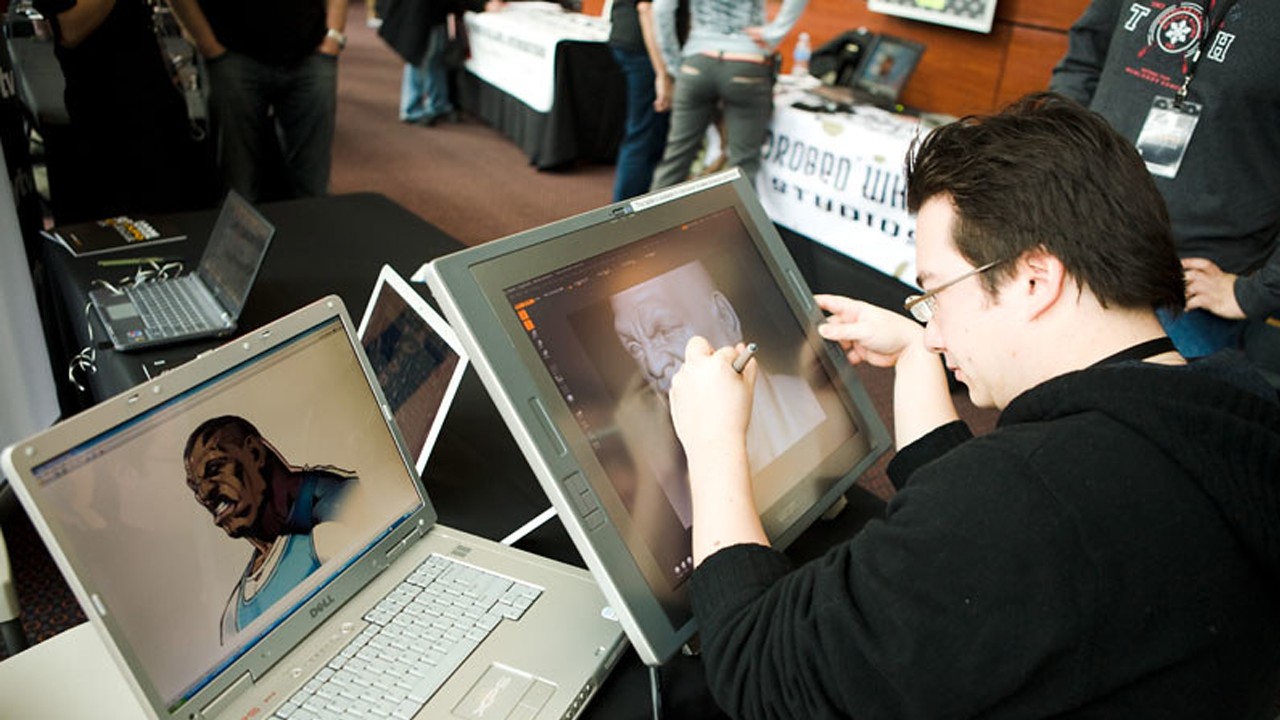Managing a game development team requires a unique blend of creativity, technical expertise, and leadership skills. Whether you’re a seasoned veteran or stepping into the role for the first time, the dynamics of game development can present a plethora of challenges. From aligning your team’s vision to navigating through tight deadlines and budget constraints, this guide offers invaluable insights into fostering a productive and harmonious environment. Discover the keys to unlocking your team’s full potential and steering your project towards success.
Establishing Clear Communication Channels
Effective communication stands at the core of every successful game development team. It is the foundation upon which ideas flourish, issues are swiftly resolved, and a cohesive product vision is maintained. Establishing clear communication channels is not just about ensuring everyone can talk to each other; it’s about creating an environment where information flows freely, feedback is constructive, and every team member feels heard and valued. This involves a combination of selecting the right tools, setting up processes, and fostering a culture of openness and trust.
In the realm of game development, where projects are complex and multidisciplinary, the absence of efficient communication can lead to misunderstandings, delays, and a fragmented team effort. To avoid these pitfalls, it’s crucial to implement a structured communication framework from the outset. This means identifying the specific needs of your project and team and tailoring your communication strategy accordingly. For instance, daily stand-ups or scrum meetings can keep everyone aligned on short-term goals, while regular retrospectives provide opportunities for reflective discussion and continuous improvement. Moreover, leveraging the right digital tools can facilitate seamless collaboration, whether your team is sharing the same office space or is spread across the globe.
Another key aspect is ensuring that communication channels are accessible to all team members and that information is democratically available. This might involve maintaining comprehensive documentation, using project management software, or setting up dedicated chat rooms for different aspects of the project. Whatever methods you choose, it’s important to remember that clarity and consistency are your allies. By investing in a robust communication infrastructure, you lay down the groundwork for a team that can adapt, innovate, and overcome challenges together.
- Implement daily stand-ups or scrum meetings to maintain alignment on project goals.
- Leverage digital tools for seamless collaboration across different locations.
- Conduct regular retrospectives for reflective discussion and continuous improvement.
- Maintain comprehensive documentation accessible to all team members.
- Use project management software to centralize communication and task allocation.
Setting Realistic Goals and Milestones
Managing a game development team necessitates a deep understanding of both the creative and technical processes involved in bringing a game to life. A pivotal aspect of this management is the establishment of realistic goals and milestones that align with the project’s scope, resources, and timeline. These objectives serve not only as a roadmap for the team but also as a motivational tool that keeps everyone focused and driven.
Firstly, it is crucial to involve the entire team in the goal-setting process. This inclusion fosters a sense of ownership and commitment to the project. When team members are part of the decision-making process, they are more likely to understand the rationale behind each goal and, therefore, more inclined to push towards its achievement. Additionally, this collaborative approach allows for the identification of any potential challenges or bottlenecks early in the process, thereby facilitating a smoother development cycle.
Secondly, breaking down the project into smaller, manageable tasks is vital. These tasks should be prioritized based on their importance and complexity, ensuring that the team maintains focus on critical milestones while also making consistent progress. Each milestone should have a clear, measurable outcome, enabling the team to assess their progress accurately and adjust their strategies as necessary. Regular review meetings can be instrumental in this regard, providing an opportunity for feedback and recalibration of goals if needed.
Lastly, it is essential to maintain flexibility in the face of the inevitable changes and challenges that arise during game development. While the overarching goals may remain constant, the path to achieving them may need to adapt in response to new insights, technical hurdles, or changes in market trends. This adaptability ensures that the team remains resilient and capable of overcoming obstacles without losing sight of the end goal.
Understanding the balance between ambition and realism is key to setting effective goals and milestones. By fostering a collaborative environment, breaking down the project into achievable tasks, and maintaining flexibility, a game development team can navigate the complexities of game creation with confidence and efficiency.
| Phase | Objective | Deadline |
|---|---|---|
| Conceptualization | Define game concept and scope | Week 4 |
| Pre-production | Complete game design document | Week 12 |
| Production | First playable prototype | Month 6 |
| Alpha | Feature complete | Month 9 |
| Beta | Launch ready | Month 12 |
In the realm of game development, setting realistic goals and milestones is not just about ticking boxes or meeting deadlines. It’s about crafting a vision that is both ambitious and achievable, then methodically working towards making that vision a reality. This balance ensures that the creative and technical energies of the team are harnessed effectively, propelling the project forward while also safeguarding against burnout and resource depletion. Ultimately, the success of a game development project hinges not just on the final product, but on the journey the team takes to get there—marked by well-planned goals and milestones that guide their path.
Fostering a Creative and Inclusive Environment

Creating a creative and inclusive environment is paramount in the game development industry. A workspace where team members feel valued and respected encourages open communication and collaboration, critical components for innovative thinking and problem-solving. To achieve this, it is essential to promote diversity in all its forms, including experience, perspectives, and backgrounds. This diversity breeds a rich pool of ideas, fostering an environment where creativity flourishes.
Moreover, it is crucial to establish clear and open channels of communication. Team members should feel comfortable sharing their ideas and feedback without fear of judgment. This can be facilitated through regular team meetings, brainstorming sessions, and one-on-one check-ins, ensuring that every voice is heard. Additionally, recognizing and rewarding creative contributions can significantly boost morale and motivation, encouraging team members to think outside the box and push the boundaries of traditional game development.
Lastly, providing continuous learning opportunities is essential for nurturing a team’s creative capabilities. Whether through workshops, seminars, or access to the latest industry research, empowering your team with new skills and knowledge keeps them inspired and engaged. This not only benefits their personal development but also enriches the collective skill set of the team, leading to the production of high-quality, innovative games.
| Strategy | Benefits | Implementation |
|---|---|---|
| Promote Diversity | Rich pool of ideas | Inclusive hiring practices |
| Open Communication | Encourages collaboration | Regular team meetings |
| Recognize Contributions | Boosts morale | Awards and acknowledgments |
| Continuous Learning | Keeps team engaged | Workshops and seminars |
| Brainstorming Sessions | Generates innovative ideas | Scheduled creative meetings |
In the context of game development, fostering a creative and inclusive environment is not just about nurturing the team’s creativity but also about leveraging diverse perspectives to create games that resonate with a wider audience. By prioritizing an inclusive culture and continuous growth, game development teams can not only enhance their productivity but also contribute to a more vibrant and diverse gaming community. This approach not only benefits the team members but also positively impacts the quality and success of the games they develop.
Implementing Agile Project Management Techniques
In the dynamic world of game development, adaptability and responsiveness to change are paramount. This is where Agile project management techniques shine, offering a framework that is ideally suited to the iterative and unpredictable nature of creating video games. Agile methodologies prioritize flexibility, continuous improvement, and most importantly, the delivery of value to customers in the form of functioning game components at the end of each iteration or sprint. By breaking down the project into manageable units, teams can focus on high-quality development, frequent reassessment, and adaptive planning, which are crucial for navigating the complexities of game development.
One of the core principles of Agile is fostering a collaborative environment where cross-functional teams work together towards a common goal. This approach encourages open communication and feedback among team members, which is essential for identifying and resolving issues quickly. Additionally, Agile practices emphasize customer involvement through regular demonstrations of progress, ensuring that the game aligns with user expectations and market demands. Such a customer-centric approach not only enhances satisfaction but also significantly increases the chances of a game’s success in a competitive marketplace.
Implementing Agile project management techniques in game development also involves embracing change, even late in the development process. This adaptability can be a game-changer, allowing teams to pivot and incorporate new ideas or feedback, thereby increasing the game’s relevance and appeal to its target audience. Furthermore, by focusing on delivering a minimum viable product (MVP) early in the development cycle, teams can test gameplay concepts and mechanics with real users, gathering valuable insights that inform future development efforts. This iterative process of build-measure-learn is at the heart of Agile and is key to creating games that truly resonate with players.
- Adopt Scrum or Kanban boards to visualize workflow and task progress.
- Conduct daily stand-up meetings to ensure team alignment and identify blockers.
- Implement sprint retrospectives to reflect on what went well and what can be improved.
- Use burndown charts to track work completion and adjust priorities as needed.
- Encourage pair programming or peer reviews to foster knowledge sharing and improve code quality.
Providing Continuous Feedback and Support
Managing a game development team involves more than just assigning tasks and deadlines. It requires a nuanced approach to leadership that fosters an environment of growth, innovation, and efficiency. Central to achieving this is the provision of continuous feedback and support. Feedback, when delivered constructively, can significantly enhance team performance, motivate individuals, and encourage a culture of open communication. It’s not only about pointing out areas for improvement but also about recognizing and celebrating successes, no matter how small. This dual approach ensures that team members feel valued and understood, which in turn, boosts their commitment and productivity.
Support goes hand in hand with feedback. Providing the necessary tools, resources, and training for team members to improve their skills or overcome challenges is essential. It’s also important to foster an environment where team members feel comfortable seeking help. This means being accessible and approachable as a leader, and promoting a team dynamic that values collaboration over competition. Integrating regular one-on-one meetings can be a highly effective strategy in this regard, offering a space for personal growth discussions, setting short-term goals, and addressing any concerns in a private setting.
Enhancing Team Dynamics with Regular Feedback Loops

Incorporating regular feedback loops into the project lifecycle is not just about improving product quality; it’s also about enhancing team dynamics. This iterative process allows for constant adjustments based on feedback, which can lead to more innovative solutions and a stronger, more cohesive team. Regular team meetings, where feedback is shared and discussed openly, can help in identifying issues early and adjusting course as needed, ensuring that the project stays on track and within scope.
Creating a Culture of Continuous Improvement
Building a culture of continuous improvement through feedback and support is a powerful strategy for any game development team. It encourages team members to constantly seek out ways to enhance their skills and the quality of their work. Such a culture not only leads to a more productive and efficient team but also fosters a sense of purpose and engagement among team members, as they see their contributions directly influencing the success of the project.
| Strategy | Benefits | Implementation |
|---|---|---|
| Continuous Feedback | Boosts motivation, enhances performance | Regular one-on-one meetings, Constructive criticism |
| Team Support | Improves skills, Overcomes challenges | Resources availability, Accessibility of leaders |
| Regular Feedback Loops | Innovative solutions, Stronger team cohesion | Iterative process, Regular team meetings |
| Culture of Improvement | Purpose and engagement, Productive team | Encourage skill enhancement, Recognize contributions |
In conclusion, managing a game development team efficiently is a multifaceted endeavor that extends beyond mere project management. It is about nurturing a team culture that values continuous feedback and support. By focusing on these aspects, leaders can unlock the full potential of their team, leading to not just successful projects but also a vibrant, dynamic work environment. Adopting these strategies can transform the development process, paving the way for innovation, efficiency, and, ultimately, success in the highly competitive field of game development.

Is a game developer and writer with over seven years of experience in the gaming industry. Specializing in game design, development trends, and emerging technologies. He has worked on indie game projects and larger development teams, sharing his insights to help aspiring developers navigate the evolving world of game creation. Ethan’s articles focus on practical tips, game mechanics, and tools to inspire creativity in the gaming community.






